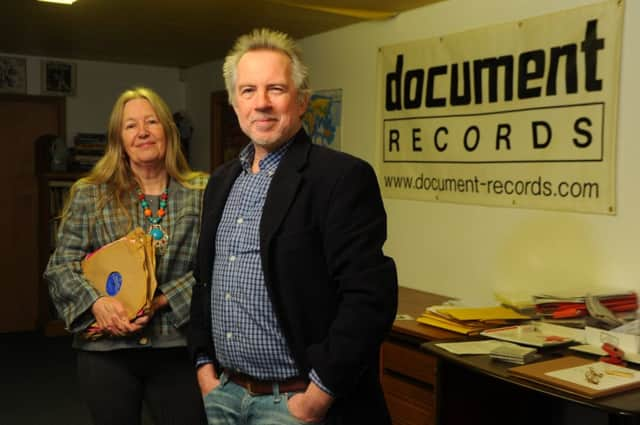How a visit to Scotland helped save The Blues


But now the last surviving copy of the groundbreaking film, The Blues, has been uncovered and restored by Scottish record label owner Gary Atkinson.
Shot in the American southern states in 1962 by producer, writer and music historian Sam Charters and his wife Ann, an author and academic, The Blues captures what was at the time an almost-forgotten generation of US blues artists in their home environment.
Advertisement
Hide AdAtkinson, who runs Document Records with wife Gillian, said: “The film is significant in that all but one of the artists had been recorded in the pre-war period, but all of that side of folk, certainly during the 1940s and 1950s, was disappearing. Blues was part of a trend and, as with all trends, things move on and the previous eras move into the past.
“To the black American record-buying public, the pre-war stuff was old, it was done with, and by the late 1950s everyone had moved on to electric Chicago blues.”
The film was given a limited release in 1963 and was only seen on a handful of US university campuses and folk festivals. Nevertheless, among experts it was lauded as a unique record of pre-war black American music.
Despite its cultural importance, the film eventually disappeared from circulation. When the Charters’ own copy vanished, the documentary was considered lost for good.
The soundtrack, however, did survive, making the leap across the Atlantic and introducing the likes of the Rolling Stones and Cream to blues luminaries including Sleepy John Estes, Furry Lewis and Pinkney “Pink” Anderson.
Atkinson said: “As far as the film is concerned, it is fantastically valuable as the first look at the people who made these early vintage recordings, and in one case it’s the first time one guy, Baby Tate, was recorded at all.
Advertisement
Hide Ad“I mean, it’s fantastically significant. Even when I was a kid getting into this stuff in 1968, 1969, you were hard pushed to find a book about the film, so the idea this piece of colour film existed of them, showing them playing their music and their lives is amazing.”
It was likely that the film would have remained lost if it was not for a bizarre coincidence that brought Charters, now in his 80s, to Document’s offices in Bladnoch, Dumfries and Galloway, in 2012.
Advertisement
Hide AdCharters was on holiday from the US and had been visiting the village looking for a book dealer when he stumbled upon the record label’s offices.
Atkinson, who was familiar with the soundtrack, took the opportunity to quiz Charters about the documentary. “Sam looked quite startled and said ‘It’s funny you should mention that’. He said that it had just been found in his archive,” Atkinson recalled.
“He had genuinely thought it was lost for good, but it surfaced in completely the wrong part of his collection, which is huge and spread over two homes. He was delighted to find it, but said there was a fault with the colour, so it was basically a red-and-black film.”
But using the record label’s technology, the sole remaining copy was colour-corrected and Charters and Atkinson decided to make a documentary about the original film, including interviews with Charters, which is expected to be completed later this year.
Beyond the performances, the original film was also intended as a social document. It shows the poverty and segregation rife in America’s South at that time. Furry Lewis is filmed sweeping the streets, while Baby Tate’s home is raided mid-interview by local sheriffs looking for contraband.
Charters said by filming the artists in their own surroundings he hoped to capture the “sense of the life they lived”.
Advertisement
Hide AdHe said: “What I had learned in my years in the South was that blues was lived in neighbourhoods, it was lived in houses, it was lived with the people and the blues was shaped and formed by, just simply, the realities of daily life…”
He said it was performed not on stage or in a studio but just by “someone actually playing his music for his friends, playing his music for neighbours, someone who was in his neighbourhood”.
Advertisement
Hide AdFor most of those filmed, the documentary made little difference to their lives. But for Estes, it led to his rediscovery by the public, taking him from poverty to becoming a concert favourite in the UK during the blues revival of the 1960s.
But for Atkinson, the documentary is not just a record of these artists but a testament to the Charters’ work to save a fading part of black American culture.
He said: “It’s part of the legacy of the enthusiasm and interest and research that the likes of Sam and Ann were doing at the time that went on to influence rock and roll as we know it.”
FOLLOW US
SCOTSMAN TABLET AND MOBILE APPS